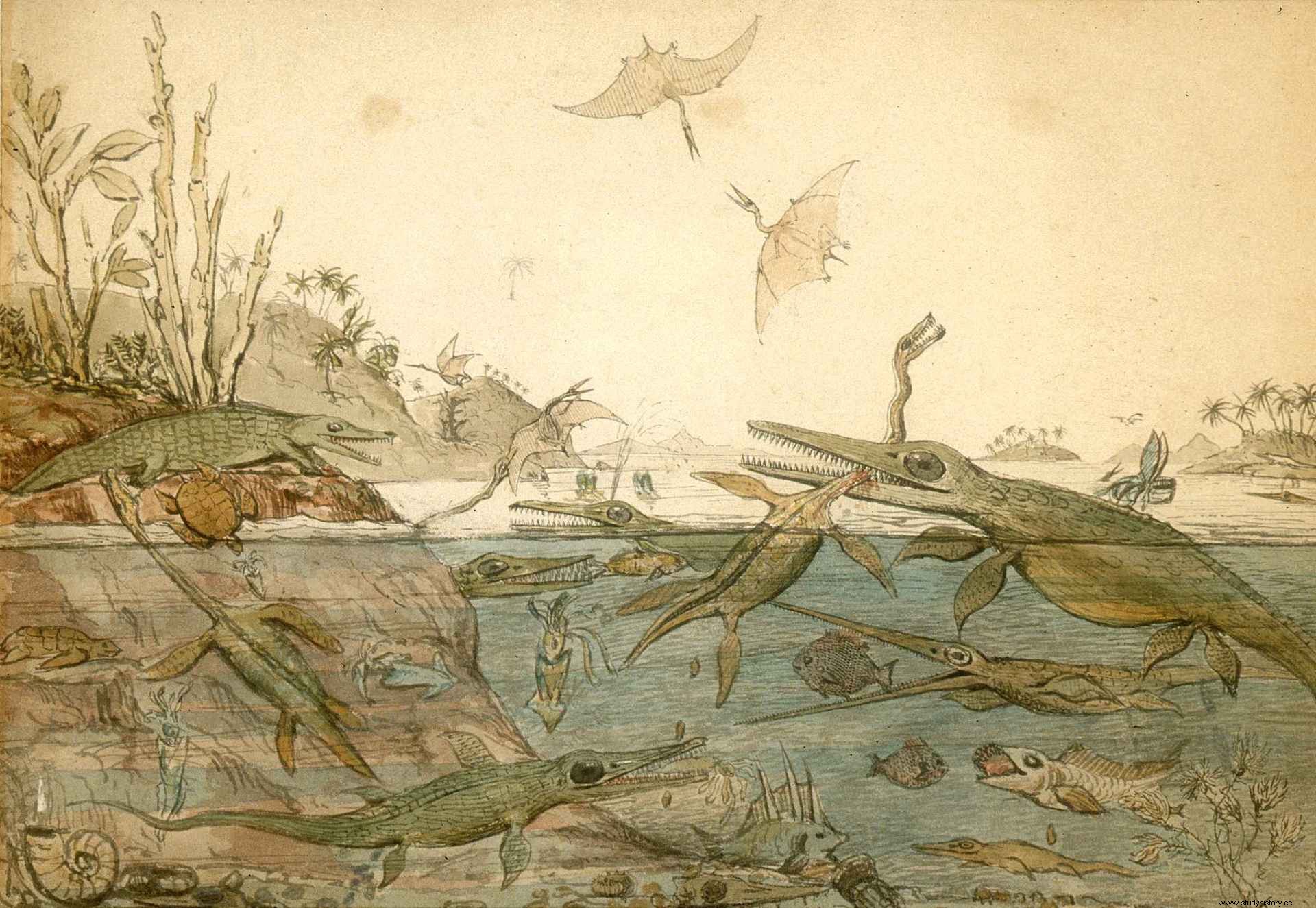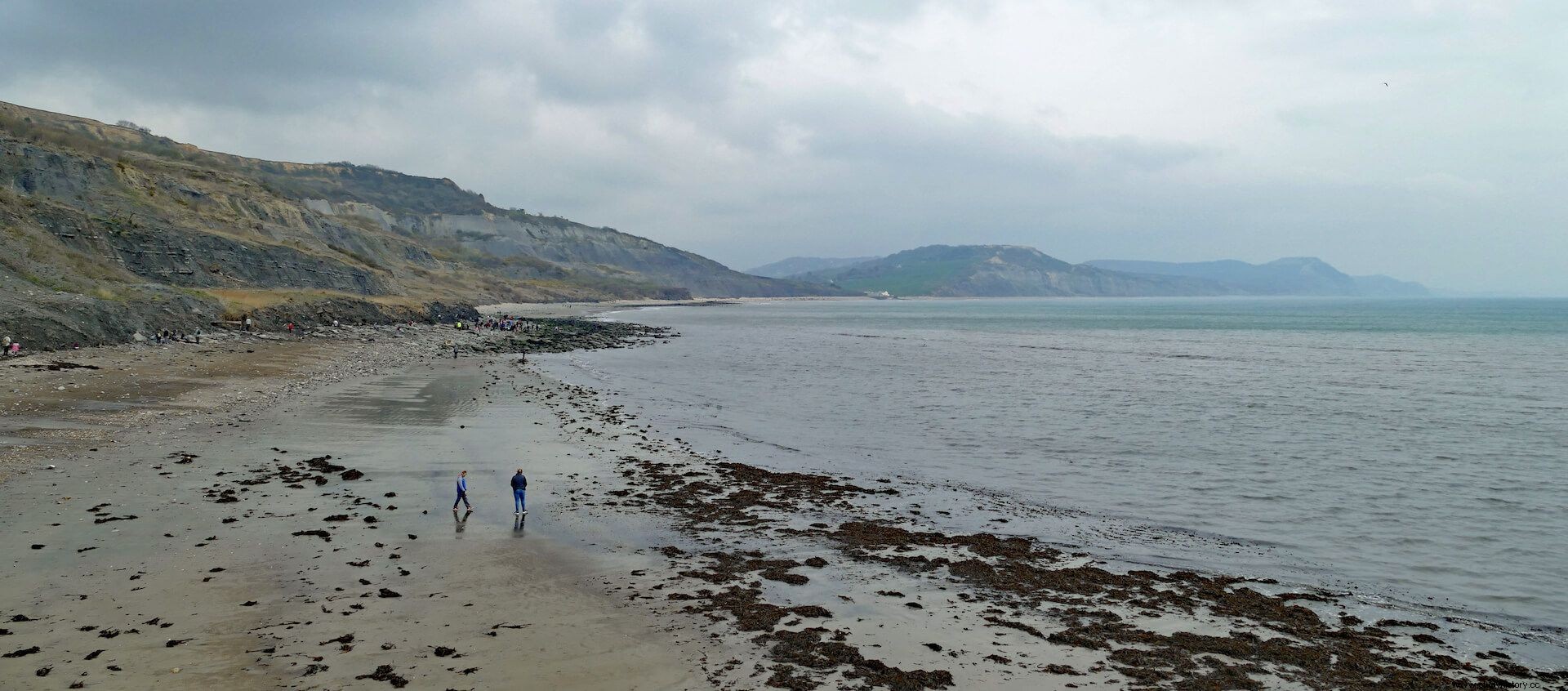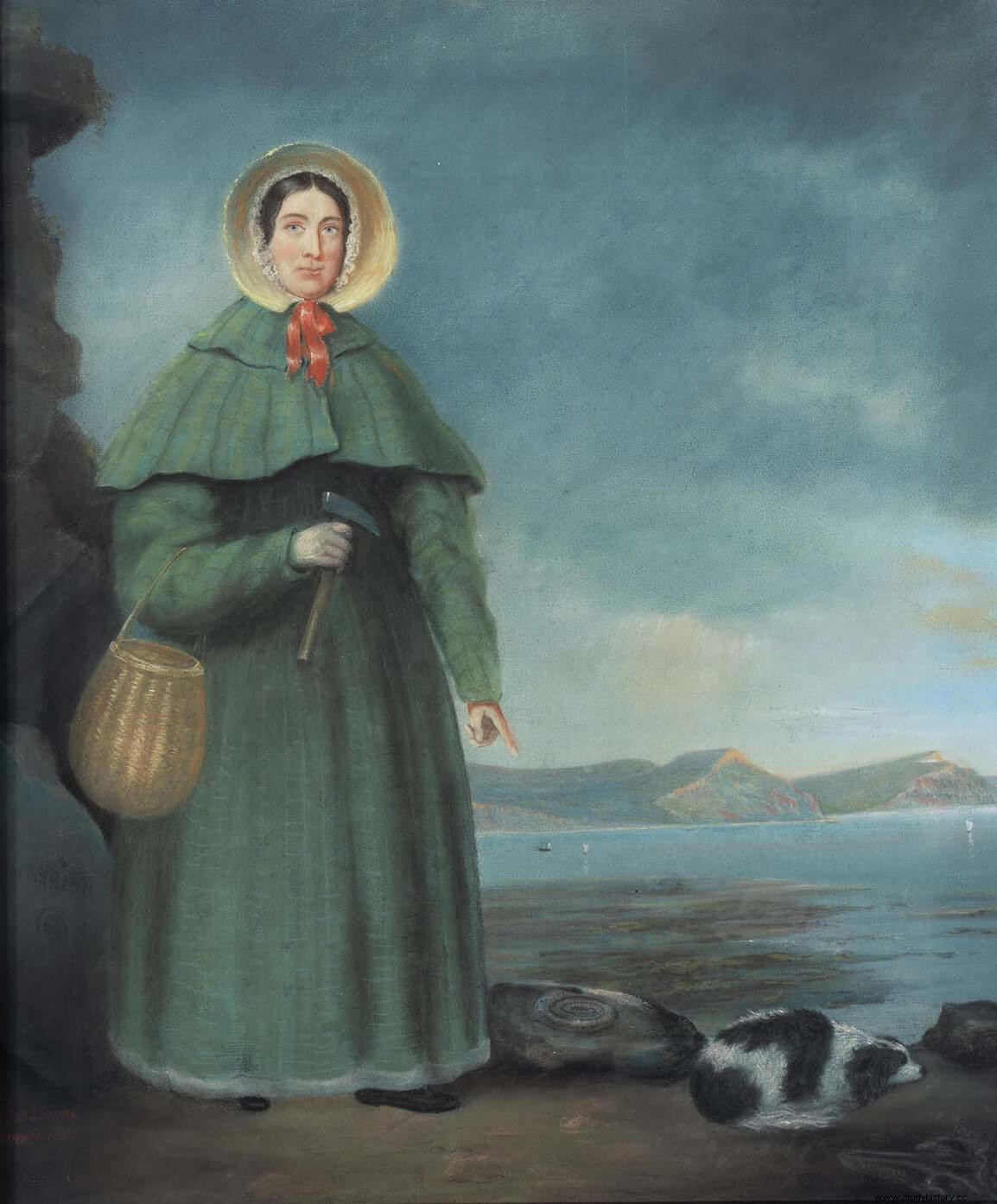
Mary Anning was born in the south of Victorian England, in Lyme Regis, in 1799. It was a time when evolution was unheard of, when species were still thought of as immutable and perfect creations, and when, at the same time, fossils and dinosaurs were beginning to be known and famous, remains of a pre-Flood era, monstrous giant iguanas and strange beings with clumsy movements.
she was a woman, which prevented her access to universities, scientific societies and the academic world in general. She, too, had no right to vote. Furthermore, she came from a poor family with a dissident religion. This was added to the severe food shortage that existed in England when Mary was just a girl and that meant that practically all the family earnings were destined, simply, to eat. Her mother had to bury eight of her ten children. Her father, in those years, was already collecting fossils to supplement the family economy, since she sold them to tourists in the area (Lyme was a region considered excellent for thalassotherapy, and it was fashionable).
Mary Anning, an early vocation…
Ever since she was little, she devoted herself enthusiastically to this task and accompanied her father since she was five or six years old, despite the fact that it would have been normal for her to stay with her mother of her learning how to handle housework. When he died, she Mary, despite being barely eleven years old, decided to continue selling fossils, while her brother worked as an upholsterer's assistant and gave her a hand from time to time.
It was not an easy task, since the same coast that allowed him practically unlimited access to knowledge about the English Jurassic, was also frighteningly insecure. The cliffs, such as the famous Black Ven They were slippery and unstable. In fact, the death of her father was caused by a worsening of her health after an accident from which she did not recover well. Her dog, her faithful companion on her field trips, also died in an earth movement. Both deaths affected her deeply, as well as being aware of her, in the last case of her (as she wrote in a letter to a friend of hers) of her, that only an instant had separated her from suffering the same fate. Q> 
she had a keen eye and was a quick learner. In addition, she not only collected the fossils, but she also took special care in the conservation and documentation of it . She drew and classified them, in addition to ordering the knowledge that she was acquiring. This not only gave her a very precise knowledge of the species that were emerging on the coast, but also allowed her to draw conclusions and make hypotheses. Thus, not only did she discover the first complete skeleton of an ichthyosaur (when she was still a child) and of the first plesiosaur, but she was also able to venture that the coprolites were fossilized feces. She described the ink sacs inside belemnites and found the first pterosaur skeleton outside of Germany. She also wrote a letter to The Magazine of Natural History , contradicting one of her articles based on her own discoveries about fossilized sharks. She also theorized about the possibility of evolution and extinction, even before Darwin's famous work.
…a frustrated profession
She established friendship networks with other amateur paleontologists and fossil collectors, such as Elizabeth Philpot (London 1780-Lyme Regis 1857) and soon geologists became interested in her discoveries, buying fossils from her and go to her with doubts and theories. She managed to set up a store, after much saving and hardship; a real one and not just the small table where she sold, when she was a child, the fossils that she found. There she was visited by Gideon Mantell, the discoverer of the iguanodon, the first dinosaur recognized as such, and described her as a presiding deity, satirical and sour, cunning and pedantic. Ludwig Leichhardt referred to her as strong and masculine, far from the Victorian cliché about the ideal woman, also calling her “the princess of paleontology” .
Unfortunately, apart from that letter, she did not publish more (although some of her notebooks remain) from her. Her knowledge was depredated by geologists who came to her in search of fossils and knowledge. They gave her name to her discoveries, they took the laurels, they published her theories without her name, without mentioning her, with rare exceptions. They recognized her authority in private, but they did not hesitate to benefit from her in the academic world.

Predation was also economic. Henry Hoste Henley bought the ichthyosaur skeleton for £23, a small fortune for the Annings, but well below its actual value, for which he would later resell it. Even so, some geologists and collectors acted as patrons, such as Thomas Birch or Henry De la Beche, who organized charity sales of fossils and lithographs (such as the one by Duria Antiquior ) to help the family in the worst of times. She also managed to get a pension from the British Association for the Advancement of Science and the Geological Society of London a few years before her death, although they did not admit her to their membership. The latter would not accept women until 1904, half a century after Anning's death. Even in her recognition of the scientific value of Mary's work, she was said to have contributed to the knowledge of dinosaurs "despite having to earn her bread every day."
Her death came as a result of breast cancer, which consumed her. In addition, the laudanum used to alleviate the effects of her illness caused her neighbors to consider her a drunkard, making her situation worse. She died in 1847, without having reached fifty years of life. The real recognition of her had to come long after her death. The Royal Society of London placed her among the ten most important British women in science. That same society did not admit women among its ranks until 1945.
The double discrimination suffered by Mary Anning, due to her gender and her social status, prevented what, in a man, would have been a brilliant career full of recognition. She died on March 9, one day after what would later become International Women's Day, in which so many Mary Annings are remembered who did not get to see their achievements recognized, so many who did not reach their potential due to the fact of being a woman.
Bibliography
Emling, Shelley (2009):The Fossil Hunter:Dinosaurs, Evolution, and the Woman Whose Discoveries Changed the World . New York:Palgrave Macmillan.
Goodhue, Thomas (2004):Fossil Hunter:The Life and Times of Mary Anning, 1799–1847 . Bethesda:Academic Press.
Gould, Stephen Jay, and Purcell, Rosamund Wolfe (1992):Finders, Keepers:Eight Collectors . New York:Norton.
Pierce, Patricia (2006):Jurassic Mary:Mary Anning and the Primeval Monsters . Stroud:Sutton Publishing.
